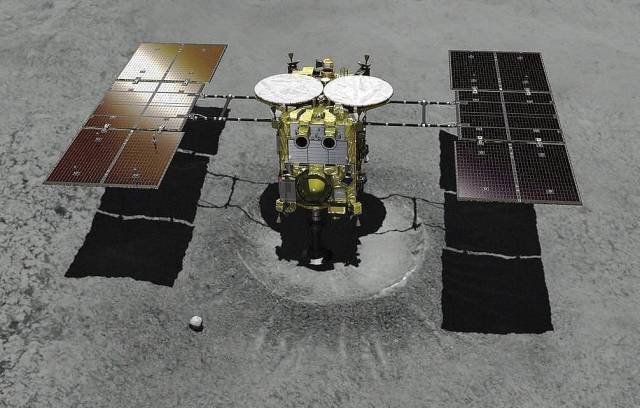After dropping the capsule, an extended mission will begin, in which Hayabusa-2 will study the small asteroid 1998 KY26
TASS, November 20. A capsule containing the primary matter of the Solar system collected by the Hayabusa-2 probe on the surface of the Ryugu asteroid will descend to The earth's surface on December 6 at the Woomera test site in southern Australia. This was announced on Friday by the press service of the Japanese aerospace research Agency (JAXA).
"The device itself will not complete its mission after delivering the" box " with the matter of the asteroid Ryugu to Earth. After its reset, an extended mission will begin, in which Hayabusa-2 will study the small asteroid 1998 KY26, a journey to which will take more than 10 years. It is possible that we will not just get photos of its surface, but also try to get closer to the surface, shoot at it and reset the backup beacon, " the report says.
The Hayabusa-2 probe left the orbit of the Ryugu asteroid at the end of last fall, whose surface and subsurface it has been studying since June 2018, and will reach Earth's orbit in early December this year. At the moment of approach to the planet, it will drop a capsule on it, which contains samples of the primary matter of the Solar system.
Current calculations by astronomers indicate that it will fall to the South of Australia in the vicinity of the Woomera test site, where experts from Japan and their Australian colleagues are already waiting for it. Over the past few weeks, they have been calculating possible trajectories of the capsule, which will help scientists quickly locate the crash site and collect samples.
While working on these plans, the mission managers and JAXA decided to expand it, since all The Hayabusa-2 instruments are in full operation, and the probe's ion engine tanks still contain about half of their initial reserves of xenon, the "fuel" of these power plants. In the summer, Japanese astronomers considered two options for continuing the mission, flights to the asteroids 2001 AV43 and 1999 KY26, but in mid-November they decided on the last small celestial body.
This is due both to the peculiarities of the trajectory of movement to it, and to the fact that scientists are attracted by the unusually high speed of rotation of this asteroid and its record-breaking small size, not exceeding 30 m. During the flight to it, astronomers plan to use The Hayabusa-2 instruments to solve other scientific problems, including revealing the nature of mysterious dust accumulations inside the "pancake" of the Solar system, which produce so-called "zodiac radiation".
About the probe
The Hayabusa-2 probe was sent into space in early December 2014 to study, collect and return samples from the Ryugu asteroid (translated from Japanese as "dragon Palace"). Planetary scientists hope that it will deliver to Earth for the first time "pure" samples of the primary matter of the Solar system, collected by the device in mid-July last year.
The collection of these samples, the probe was performed in two stages. It first approached the asteroid's surface in February 2019 at the "Tamatebako" ("Magic box") point and fired a five-gram tantalum bullet at it. Two months later, the mission's pilots and science team successfully completed the second phase, dropping an explosive package with a mass of approximately 15 kg on Ryuga.
It contained approximately 4.5 kg of octogen and was designed in such a way that all the force of the explosion was directed down towards the surface of the asteroid. As a result, a new crater with a diameter of 15 m appeared on the surface of ryugu. Having successfully completed this operation, Hayabusa-2 made another approach to the asteroid's surface in July last year, taking clean samples of the Solar system's primary matter from a man-made crater for the first time in human history.

